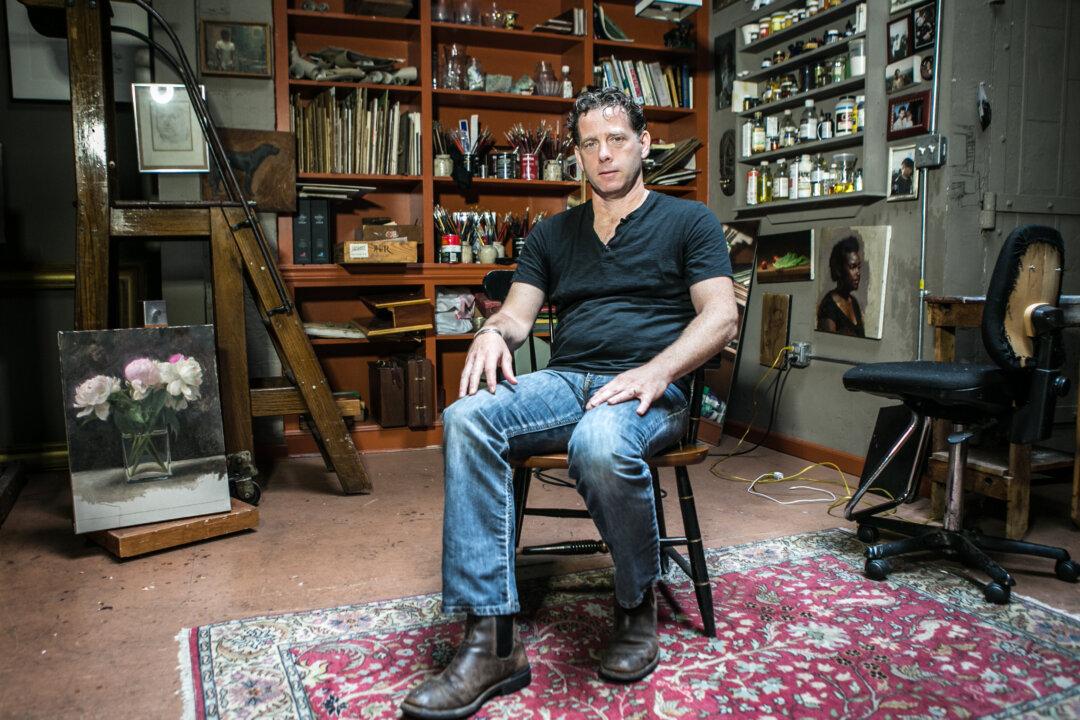NEW YORK—Pomegranate seeds look like they had just rolled off onto the marble surface after the fruit was just cut. The knife rests on the side, with its tip hanging over the edge. The seeds glisten deliciously, almost emanating their own light.
In another painting, a package of flour had been ripped open, leaving a mound of flour on a wooden surface. The orange-red paper reflects on a glass half full of water, while two eggs sit side-by-side as if witnessing the whole scene. The flour looks so vibrant; for an instant, you might think you could dig into the painting to grab a handful.






